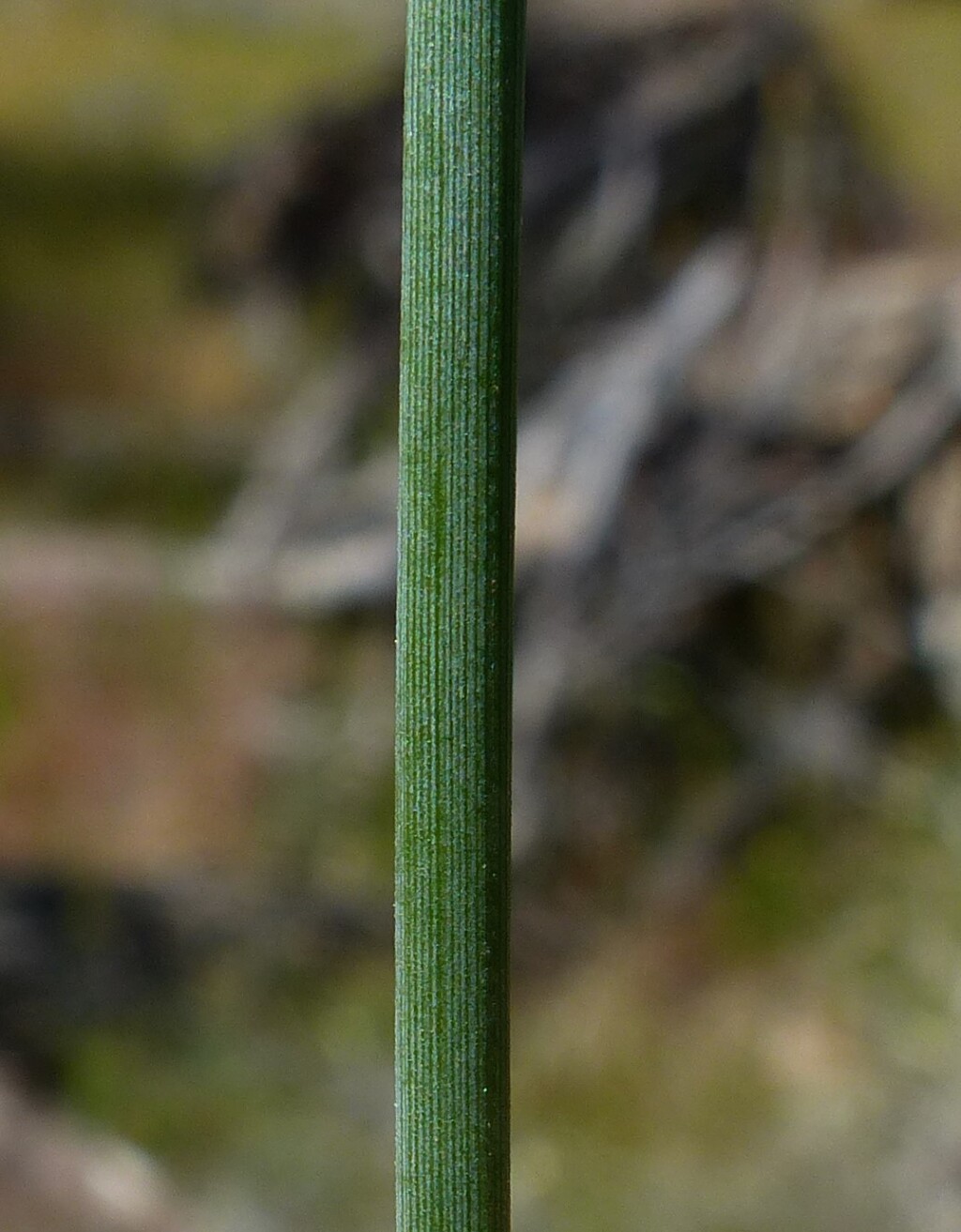Juncus remotiflorus
L.A.S.JohnsonLoosely tufted perennial with horizontal or ascending rhizome. Cataphylls tight or loose, pale to medium brown towards the base, the uppermost sometimes with a pinkish tinge, to c. 13 cm long. Culms erect, dull grey-green to blue-green, sometimes tinged reddish-purple or with a waxy bloom, (15–)30–90 cm high and (0.5–)1–2.7 mm diam.; striations crowded, 40–75, not strongly raised, variable in width but mostly fine; pith interrupted with very large air spaces; stomates superficial. Inflorescence very open, flowers widely spaced along erect or slightly curved (and often reddish) branchlets; primary bract continuous with culm, to c. 30 cm long; prophylls present. Tepals stramineous or with a faintly reddish tinged midrib, 2.5–4.0 mm long; stamens 3–6, anthers 0.5–1.0 mm long. Capsules stramineous, ± with a golden-brown apex, shorter than, equal to, or longer than the tepals, 2.5–4.5 mm long. Flowers mostly Nov.–Jan., seeds shed mostly Nov.–Feb.
LoM, MuM, Wim, VVP, VRiv, RobP, MuF, GipP, Gold, CVU, GGr, DunT, NIS, EGL, EGU, HSF, HNF. Also Qld, NSW, ACT. Typically a species of drier rainshadow (and often auriferous) areas, occurring along temporary watercourses in dry eucalypt forest or woodland.
Forms of Juncus subsecundus with very open pith and open inflorescences closely resemble J. remotiflorus but have harder culms with fewer, more strongly raised striations. Included within Johnson's (1993) circumscription of J. remotiflorus are plants with as few as 25 culm striations, but plants with so few culm striations have not been collected in Victoria. Juncus radula also somewhat resembles J. remotiflorus (see notes under that species for differences). Hybrids with J. subsecundus and J. amabilis are known.
Albrecht, D.E. (1994). Juncus. In: Walsh, N.G.; Entwisle, T.J., Flora of Victoria Vol. 2, Ferns and Allied Plants, Conifers and Monocotyledons, pp. 197–233. Inkata Press, Melbourne.
 Spinning
Spinning
